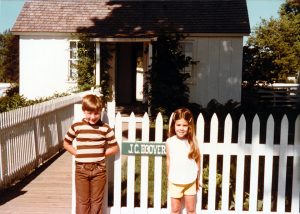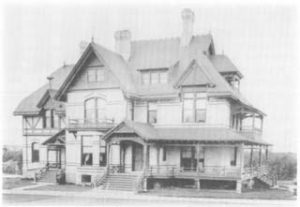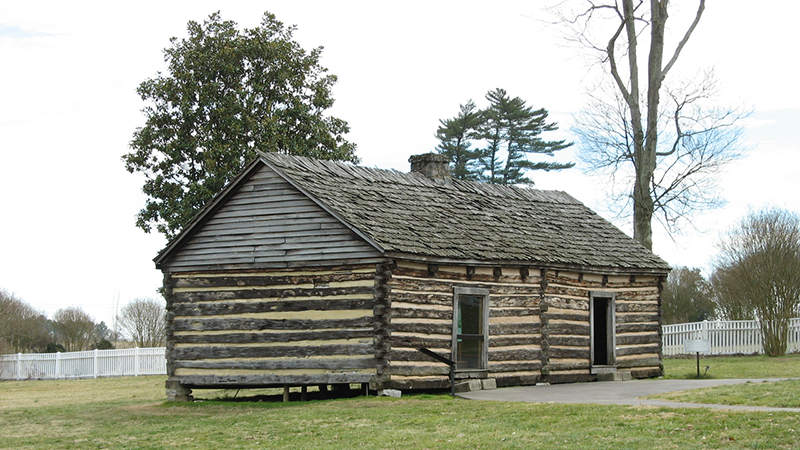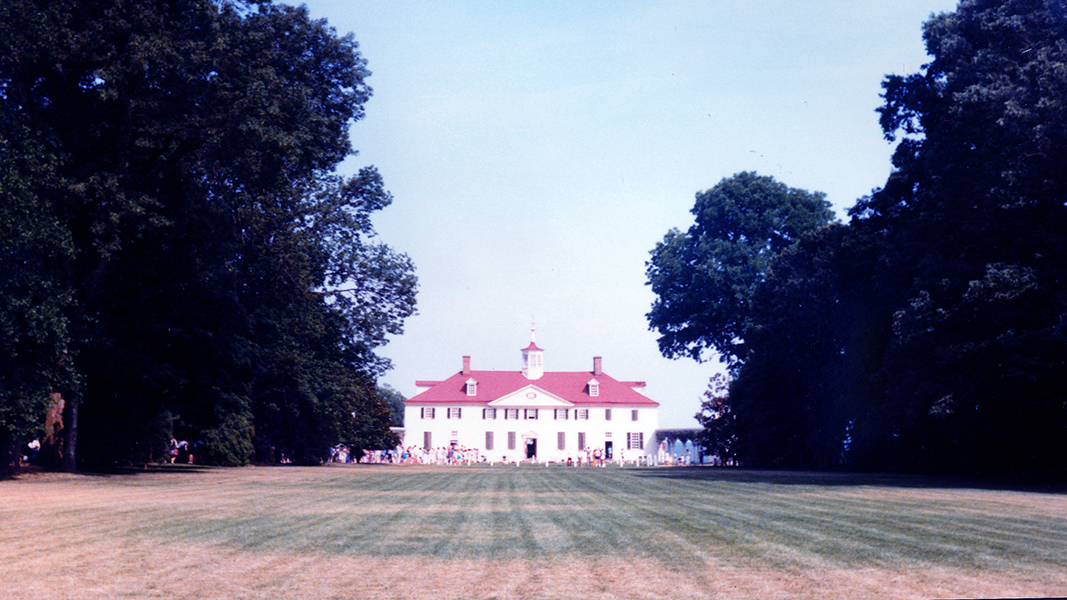It’s hard to admit in a room of history nerds that you’ve always hated historic house museums. Before entering any historic house conversation, I feel I need to stand up, state my name, and declare my hatred for the museum type. Recently at the Minnesota Alliance of Local History Museums annual meeting and conference, I again acknowledged my feelings in a session on house museums.

This hatred for house museums goes back to my childhood. My parents took my brother and me to many house museums on our family travels. Whether it was the family trek to the Herbert Hoover National Historic Site in the 1970s or the one to Mount Vernon and its environs in the mid-1980s, photos suggest we were perfectly happy to take the tour.
But as a child I felt unwelcome in most museums. I wasn’t allowed to touch anything. I couldn’t see anything above a certain level or hidden behind a knee wall. And, despite my budding intellect, I had a hard time understanding tour guides because my mind has always processed the written word better than the spoken one. If first-person interpreters worked on site, the visit was usually a complete loss because I spent the entire time trying to understand why a person from the 1800s wanted to talk to a girl about life a century ago. Visits to historic house museums might have solidified my love for history and architecture, but what usually made them tolerable was the hard candy we bought in the gift shop after the tour.

(Image source: Wikimedia Commons)
The historic house museum I recall feeling most uneasy about was the Henry J. Rogers House in Appleton, Wisconsin (now known as Hearthstone). It has a wonderful history: the first home in the world lit using hydroelectricity. And, it is a beautiful piece of architecture: prominent Fox Valley architect William Waters designed the Queen Anne home overlooking the Fox River. It opened as a museum when I was in high school (though I would have guessed earlier based on my recollections). Looking back, I realize I came away from a tour of the site thinking only that red velvet ropes had to go. Though it had been occupied by a family just a few years before, Hearthstone felt dusty and dead inside.
Throughout my preservation education, I acknowledged and was wary of what I eventually termed the red velvet rope syndrome. Whether in my studies or in my travels, my mind intellectually took on the challenge of every historic house museum I encountered. Why is it here? Why is it significant? Is it simply serving as a backdrop for an exhibition on the accomplishments of some rich dead white guy? Why can’t it be returned to the living? How can it tell the larger story of the community? How can it relate to the world in which we live? The world in which our children and grandchildren will live?
The historic house museum session at the MALHM conference confirmed that dread for historic house museums is not mine alone. Before thinking outside the historic house box, presenter Jayne Becker (from the Alexander Ramsey House) asked us to firmly place ourselves inside the box. She shared various comments overheard about historic house museums, including:
- “Lace & doilies. That’s all it was—lace & doilies. Who cares?”
- “I was factoid’ed to death. It wasn’t an interesting experience.”
The session also confirmed what I’ve learned since I began looking beyond the red velvet ropes of my youth. Historic house museum programming can readily incorporate vibrant programs and events instead of depending upon the traditionally staid historic house tour.

From “History Happy Hours” to contemporary art installations, historic house museums are looking beyond the doilies, factoids, and rich dead white guy history by researching, preserving, and interpreting larger and more inclusive stories and by connecting those stories to life today. Take, for example:
- LatimerNOW: The Lewis H. Latimer House is associated with the African-American inventor who played a significant role in the work of Alexander Bell and Thomas Edison. In addition to summer camps on robotics and electronics, this historic house museum hosts art installations, poetry readings, and other events dedicated to science.
- Jane Addams Hull-House Museum: The Hull-House Museum is associated with the social activist and first American woman to receive the Nobel Peace Prize. Much like the settlement house’s original purpose, the Hull-House Museum provides educational programming including conversations, films, and exhibitions about its Chicago community, the human experience, and equity.
Museum professionals and other individuals also continue to challenge the historic house museum model. Franklin Vagnone of Twisted Preservation is well known within the museum field. His Anarchist’s Guide to Historic House Museums with Deborah Ryan challenges museums to re-think their visitor experience. And Joe McGill of the Slave Dwelling Project has spent years helping museums and communities re-examine how the story of slavery is preserved and interpreted for future generations.
I sometimes feel like there should be a 12-step program for those of us with hatred toward historic house museums. I certainly feel powerless over my feelings, but I regularly inventory my reactions and seek some sort of re-awakening. With the help of these examples and numerous other museums thinking outside the historic house box, maybe one day I’ll be able to list off all of my favorite historic house museums instead of always dwelling on the red velvet ropes of my past.

